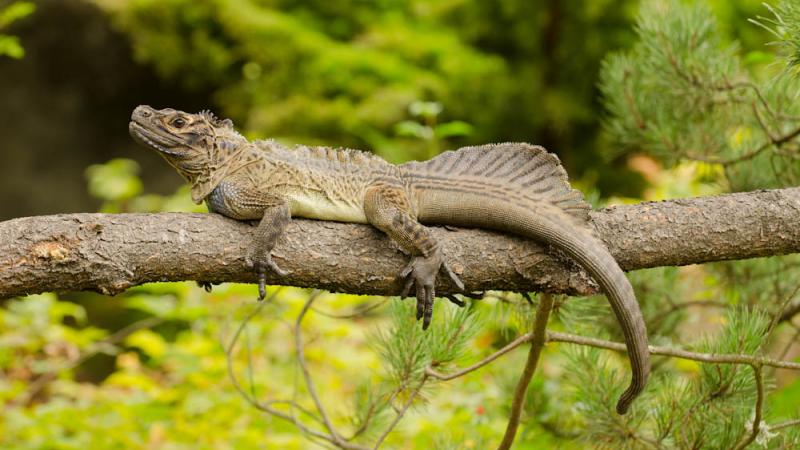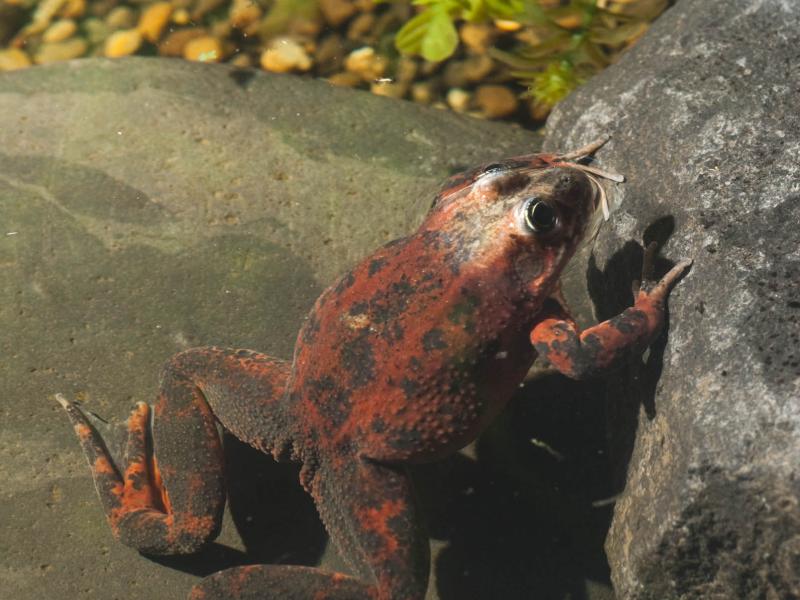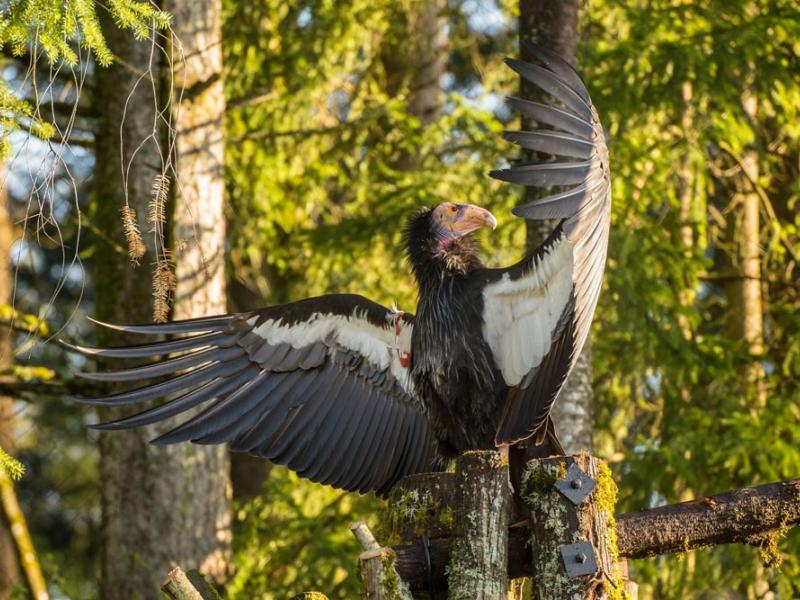
This lizard is native to silty lowland rivers in tropical forests of the Philippine Islands and southern New Guinea. It is an omnivore.
Did you know?
- Hydro means water; saurus means lizard: Water lizard. This lizard is an excellent swimmer.
- The sailfin has a vestigial eye atop its head. It's called the parietal or pineal eye. Parietal refers to the top of the skull. A pineal eye is also called a third eye. Some reptiles like the sailfin have it. The pineal eye is sensitive to the angle of the sun's rays, and is thought to be a homing mechanism.
Sailfin lizard behavior and facts
- The male has large sailfins on its back and long tail; the female has dorsal fringe (near the back and upper surface).
- Scale fringes on flattened toes act like pontoons, and allow the lizard to run on top of water on its hind legs.
- It eats fish, frogs, fruits, vegetables and insects.
- The lizard defends itself from predators by escaping into the water, often dropping from tree limbs, where it rests.
- Hand-raised individuals become tame and seem to like being handled.
Vital statistics
- Length: 24 to 30 inches; maximum 36 inches
Status
Not listed
Sailfin lizards, the Oregon Zoo and you
The zoo's lizards are used in its education programs. Lizard habitat is threatened by converting woodlands into farmlands and by logging. Hatchlings are collected for the pet trade and local consumption.




